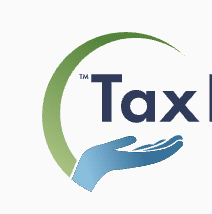
"The most frequent avoidable delays stem from improperly filed tax returns, returns missing information, incorrect direct deposit information, and mismatched dependent SSNs," says David Kindness, CPA and Founder of Your Creative CPA. "The best preventative steps are simple: collect all of your official tax documents ahead of time, and double-check your tax forms before you submit them to the IRS."
This guide breaks down exact IRS refund timelines, explains why delays happen, and provides actionable strategies to receive your refund as quickly as possible.
Key Insights
- E-filing with direct deposit takes 7-21 days (fastest option).
- Paper filing can extend refunds to 4-10 weeks or longer.
- EITC and ACTC refunds held until mid-February under PATH Act.
- 90% of refunds are processed within the standard 21-day window.
Typical IRS Refund Timelines for 2025
The IRS provides specific processing timeframes based on how you file your return and receive your refund. These timelines represent when you can expect your refund after the IRS accepts your return for processing.
Official IRS Refund Processing Times
Filing Method | Payment Method | Processing Time |
Electronic filing | Direct deposit | 7-21 days |
Electronic filing | Paper check | 2-4 weeks |
Paper filing | Direct deposit | 4-8 weeks |
Paper filing | Paper check | 8-10 weeks or longer |
Amended return | Any method | 8-16 weeks |
Why E-Filing Is Best for Refunds
Electronic filing: Remains the fastest option because the IRS can immediately validate your information and begin processing. Most e-filed returns receive acceptance confirmation within 24-48 hours.
Paper filing: Requires manual entry and review by IRS staff, significantly extending processing times. During peak season, paper returns may take even longer due to processing backlogs.
"Common filing errors include incorrect income reporting from a missing 1099, which can take 60-90 days to resolve by corresponding with the IRS, and incomplete reconciliation of advanced Child Tax Credit or stimulus payments, which often triggers a 4-6 week review cycle," explains Kindness.
Why Tax Refunds Get Delayed
Several factors can extend your refund timeline beyond the standard processing windows, some within your control and others determined by IRS policies and procedures.
PATH Act Refund Holds
The Protecting Americans from Tax Hikes (PATH) Act requires the IRS to hold refunds that include the Earned Income Tax Credit (EITC) or Additional Child Tax Credit (ACTC) until at least mid-February. This affects millions of taxpayers who file early but must wait for their refunds.
If you claim these credits, expect your refund no earlier than February 15, regardless of when you file.
Common Return Errors and Missing Information
Return errors trigger automatic IRS review, extending processing time by weeks or months while you provide corrections or additional documentation via IRS correspondence or an amended return.
Some common tax errors that delay refunds include:
Incorrect Social Security numbers for taxpayers or dependents.
Mathematical calculation errors.
Missing or unsigned forms.
Incorrect bank account information for direct deposit.
Mismatched names between tax return and Social Security Administration records.
IRS Processing Capacity and Backlog Issues
The IRS processes over 150 million individual tax returns annually, with capacity limitations affecting processing speed during peak periods. Staffing challenges and system upgrades can create temporary delays beyond standard timelines.
“To minimize your risk, ensure that the information in your tax return is consistent with what the IRS has received from employers and financial institutions, like Form W-2, Form 1099, and brokerage statements," advises Kindness.
How to Track Your Tax Refund Status
The IRS provides free tools to monitor your refund progress and identify potential issues before they become major delays.
Where's My Refund Tool
The official "Where's My Refund?" tool at IRS.gov requires three pieces of information:
Your Social Security number or Individual Taxpayer Identification Number (ITIN).
Filing status from your return.
The exact refund amount is shown on your return.
Refund Status Updates
The tracking system shows three main stages:
Return Received: The IRS has accepted your return and begun processing.
Refund Approved: Your refund amount has been approved and will be issued by the date shown.
Refund Sent: Your refund is on its way via direct deposit (typically within 5 days) or mail (2-4 weeks for checks).
When to Check Your Status
24 hours after e-filing a current-year return.
3-4 days after e-filing a prior-year return.
4 weeks after mailing a paper return.
"The IRS refund tracking tool satisfies an estimated 85-90% of taxpayers' concerns about their refunds, especially for standard tax returns," notes Kindness. "Direct contact with the IRS is typically only necessary for more complex issues, amended returns, or returns flagged for identity verification."
Tips to Receive Your Tax Refund Faster
Strategic choices during tax preparation and filing can significantly reduce your refund processing time and minimize delay risks.
Choose electronic filing with direct deposit: This combination offers the fastest possible refund timeline and eliminates common delays associated with paper processing and check mailing. Direct deposit also reduces the risk of lost or stolen refund checks.
File early with complete documentation: Filing as soon as you receive all necessary tax documents (W-2s, 1099s, etc.) puts your return ahead of peak-season backlogs. However, avoid filing before you have complete information, as corrections are time-consuming and often require amended returns.
Double-check your return before submitting: Accuracy prevents delays. Review all Social Security numbers, bank account information, and calculations before filing. Tax software typically catches mathematical and legal errors, but data entry mistakes still occur.
Understand credit-related delays: If you claim EITC or ACTC, plan for mid-February refund timing regardless of filing date. Consider adjusting your withholding if you prefer a steady income over large refunds.
"The most tax-efficient strategy isn't to pursue a large refund; it's to adjust your withholding to get as close to break-even as possible," explains Kindness. "A large refund is essentially an interest-free loan to the government. However, for those who rely on it as a forced savings mechanism, filing as soon as you have every necessary form in hand ensures your return is processed right away."
Average Tax Refund Amounts in 2025
"Per the IRS's filing season statistics report, the average tax refund for the 2025 filing season was $3,116, roughly consistent with the previous year's average when adjusted for inflation," notes Kindness.
Based on IRS data, approximately 90% of refunds are processed within the standard 21-day window for electronic returns with direct deposit. The remaining 10% face delays due to errors, additional review requirements, or claims requiring manual verification.
Best Times to File Your Return
The IRS typically processes the highest volume of returns between February and April, with peak processing occurring in late February through March. Filing during off-peak periods may result in faster processing.
What to Do When Refunds Are Delayed
Different tax situations require specific approaches to minimize delays and resolve issues quickly.
Amended Returns Take Longest
Amended returns (Form 1040-X) require manual review and typically take 8-16 weeks to process. File amendments only when necessary, as they significantly extend resolution timelines.
Missing Refunds After Expected Timeline
If your refund hasn't arrived within expected timeframes:
Check "Where's My Refund?" for status updates.
Wait until official timeframes pass before contacting the IRS.
Consider contacting the Taxpayer Advocate Service for complex cases.
Direct Deposit Issues
Incorrect bank account information forces the IRS to issue paper checks, adding 3-4 weeks to your timeline. That’s why you should verify account and routing numbers before filing.
"Beyond the PATH Act, the most common reasons for delays are data mismatches, such as when the income or withholding reported on a return doesn't match IRS records, and errors related to more complex tax schedules," explains Kindness.
"The IRS still processes paper returns by hand, with employees manually entering each return's information. Since the IRS received about 43 million paper tax returns, the delays in processing paper returns can be significant."
Frequently Asked Questions
How long until I see my tax refund?
Most taxpayers receive refunds within 21 days when filing electronically with direct deposit. Paper filing or choosing mailed checks can extend this to 4-10 weeks, depending on processing volume and accuracy.
Why is my refund taking longer than 21 days?
Refunds may be delayed due to return errors, additional review requirements, EITC/ACTC holds under the PATH Act, or IRS processing backlogs during peak season. Check "Where's My Refund?" for specific status information.
When can I check my refund status?
You can track your refund status 24 hours after e-filing or 4 weeks after mailing a paper return. The IRS updates the system daily, typically overnight.
Does claiming tax credits delay my refund?
Claiming EITC or ACTC triggers automatic holds until mid-February under the PATH Act. Other credits typically don't cause delays unless they require additional verification or trigger audit selection.
What should I do if my refund is significantly delayed?
First, verify your refund status using the official IRS tool. If you're past expected timelines and the tool shows no progress, contact the IRS directly or consider reaching out to the Taxpayer Advocate Service for assistance.
Bottom Line
Tax refund timing depends primarily on your filing method and payment choice, with e-filing and direct deposit offering the fastest 7-21 day timeline. While most refunds arrive within standard windows, factors like the PATH Act, return errors, and processing capacity can extend wait times significantly.
Understanding these timelines helps you plan your finances appropriately and avoid unnecessary concern about delayed refunds. The key is filing accurately and electronically while choosing direct deposit for the fastest possible processing.
Start tracking your refund status 24 hours after e-filing using the official "Where's My Refund?" tool, and contact the IRS only after standard processing windows have passed for your filing method.
Methodology
Expert verification: All claims and recommendations in this article have been reviewed by David Kindness, CPA and Tax Professional, for accuracy and practical applicability. Expert insights reflect real-world experience in tax preparation and knowledge of IRS processing procedures and common delay factors.
Data sources: Processing statistics and average refund amounts are compiled from IRS filing season statistics reports and official government publications. Timeline estimates represent typical processing windows for different filing methods and payment options as established by IRS policy.
Current information: All information in this article reflects tax processing standards and requirements for the 2025 tax filing season. Tax laws, processing procedures, and timelines may change, and readers should verify current requirements with the IRS or qualified tax professionals.
Verification process: All recommendations comply with current IRS regulations and represent standard practices for expediting tax refund processing. Cost and time estimates are presented as ranges to account for individual variations and processing complexity.



